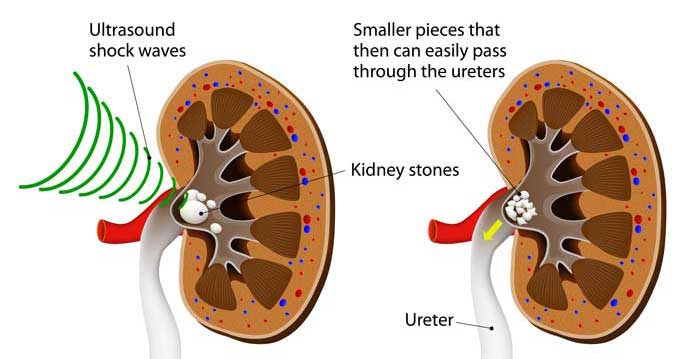For several hours after the procedure you may have a burning feeling when you urinate.
Kidney laser lithotripsy side effects.
Drinking a lot of water can help.
The stone pieces then pass out of your body through your urine.
For several hours after the procedure you may have a burning feeling when you urinate.
Lithotripsy is a procedure that uses sound waves to break up stones in the kidney ureter or bladder.
Laser lithotripsy is a way to treat kidney stones.
Lithotripsy is a medical procedure that uses shock waves or a laser to break down stones in the kidney gallbladder or ureter.
You may also have bruising and discomfort in your back or abdomen.
This was a nonthermal safe laser that produced plasma between the tip of the fiber and the calculus fragmenting stone with a photo acoustic effect.
This feeling should go away within a day.
A ureteroscopy that uses a laser to break up small kidney stones may take about 90 minutes.
Laser lithotripsy is a way to treat kidney stones.
Laser lithotripsy was first introduced commercially in the late 1980s with the pulsed dye laser which uses 504 nm of light delivered through optical quartz fibers 8.
The remaining particles of small stone will exit the body when a.
More serious problems are less likely but can include.
This feeling should go away within a day.
This treatment uses a laser to break kidney stones into tiny pieces.
Bleeding around the kidney infection.
This treatment uses a laser to break kidney stones into tiny pieces.
Drinking a lot of water can help.
You may feel the urge to go even if you don t need to.
Shock wave lithotripsy for kidney stones can cause side effects such as cramps or blood in your urine.
You may have blood in your urine for 1 to 2 days after the procedure.
You may feel the urge to go even if you don t need to.
The type of laser used with the ureteroscope is called a holmium laser.
Please use one of the following formats to cite this article in your essay paper or report.

